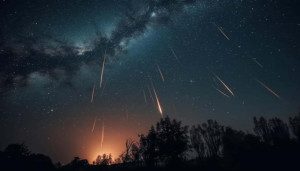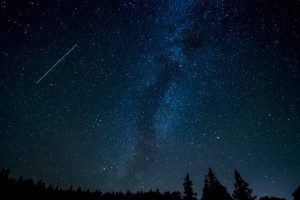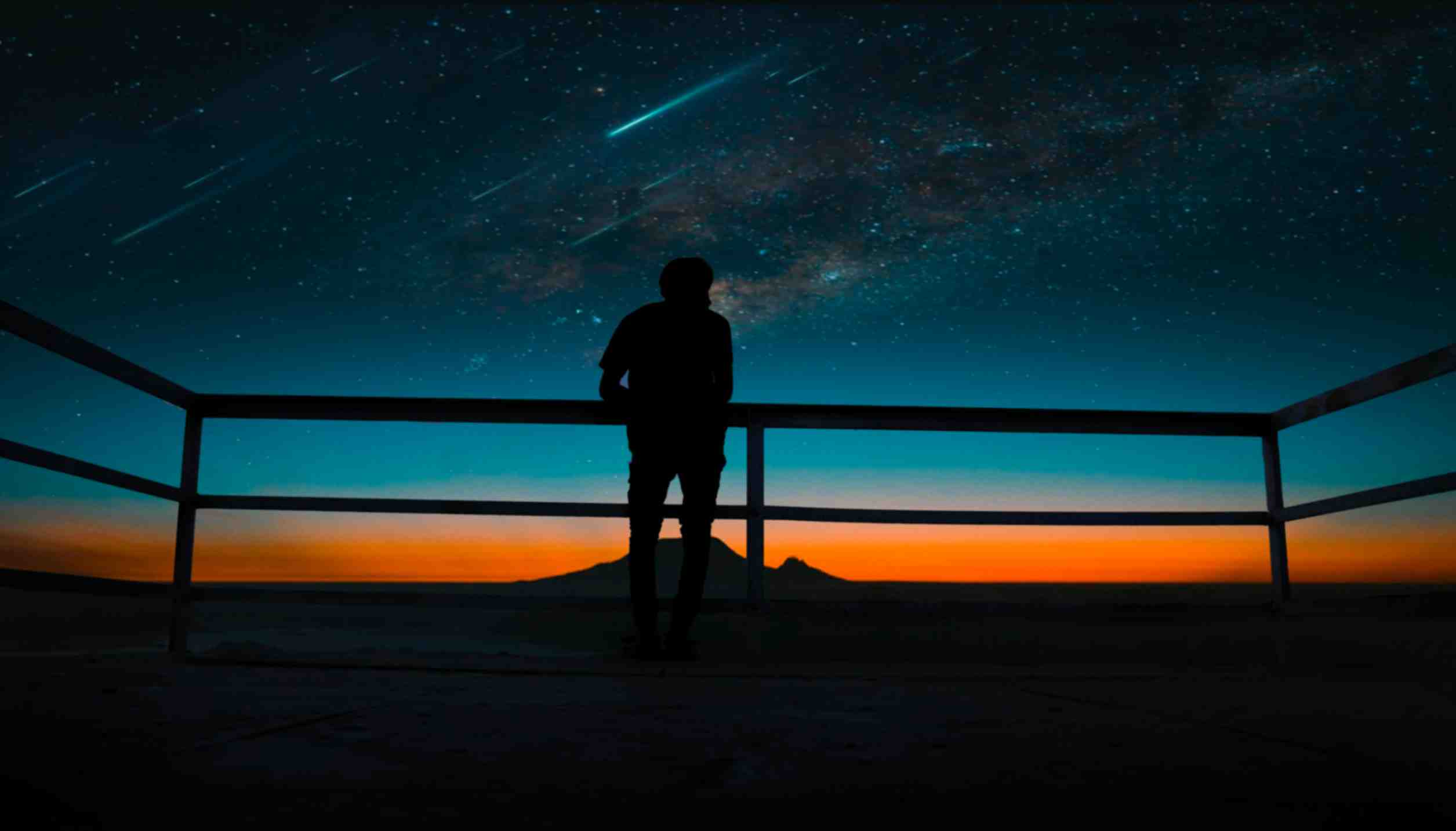Are you excited for one of the most popular meteor showers of the year? The Orionids Meteor Shower is the most bounteous meteor shower associated with Halley’s Comet. The Orionids meteor shower is visible every year and its peak is approximately late October. It produces a consistent number of bright meteors, and it’s active during a time of year when the weather is often mild.
What is an Orionid meteor Shower?
The Orionid meteor shower is caused by dust particles from Halley’s Comet, which orbits the Sun every 76 years. Named after astronomer Edmond Halley, Halley’s Comet is the first short-period comet whose return was predicted. The comet emits dust particles like steam from a locomotive, leaving those dust particles behind in its path.

When the Earth interrupts Halley’s comet’s path in late October every year, we get the Orionid meteor shower. During each orbit through the inner solar system, the nucleus of Halley’s Comet loses material, resulting in a dust trail that creates meteors when it passes through Earth’s atmosphere.
Despite being only 8 by 15 km in size, Halley’s Comet has enough material to orbit the Sun for billions of years, providing a beautiful cosmic experience from generation to generation. Halley’s comet is responsible for two meteor showers: the Eta Aquarids in May and the Orionids in October.
The Orionids appear to come from the constellation Orion, hence the name. The radiant of the Orionids is located between the constellations Gemini, Orion, and the bright star Betelgeuse. Rising in the east after midnight during October, the meteors often don’t become visible until they are 30 degrees from their radiant point, meaning they will appear in all parts of the sky.
The Orionids are swift meteors, diving into Earth’s atmosphere at about 66 kilometers per second. They are mostly faint but leave glowing ionized gas trails that linger for a few seconds after the meteor disappears. Under dark skies, Orionid meteors can also be exceptionally bright and break up into multiple particles.
When to See the Orionid Meteor Shower in India?

The Orionid meteor shower will be active from September 26 to November 22. However, the peak is expected on October 22 after midnight. From a dark location away from city lights, one can experience about 10 to 20 Orionids per hour at peak activity.
Here are some tips for observing the Orionids in 2024
- Find a dark location away from light pollution. Face southeast in the Northern Hemisphere or northeast in the Southern Hemisphere.
- Look 30–40° away from the Orion constellation radiant to see longer, more spectacular meteors.
- Use your naked eye. No tools are needed!
- Use a sky map app to spot the Orion constellation.
- Dress for the weather and bring a blanket or chair.
How to see the Orionid Meteor Shower in India?
To get the best view of the Orionid meteor shower, find a dark location away from city lights and allow your eyes to adjust to the darkness. Locate the constellation Orion and spot the area between Orion’s brightest star Betelgeuse and the Gemini constellation, as this is the radiant point for the Orionids. Remember to scan the entire sky since the Orionid meteors will streak in all directions.
The Orionid meteor shower is best viewed during the early morning hours using the naked eye, but binoculars or a telescope can provide a closer look. Stay patient when watching for meteors, as it may take some time to see your first one. Once you spot a meteor, try tracing its path backward to the radiant point – this will help you observe more Orionid meteors.
The key is finding a dark observing location and giving your eyes time to adapt to the darkness. Face southeast and look about 30-40 degrees away from Orion’s constellation to catch longer, more spectacular meteors radiating outward. With some time and patience, you’ll be rewarded with glowing Orionid meteors!

